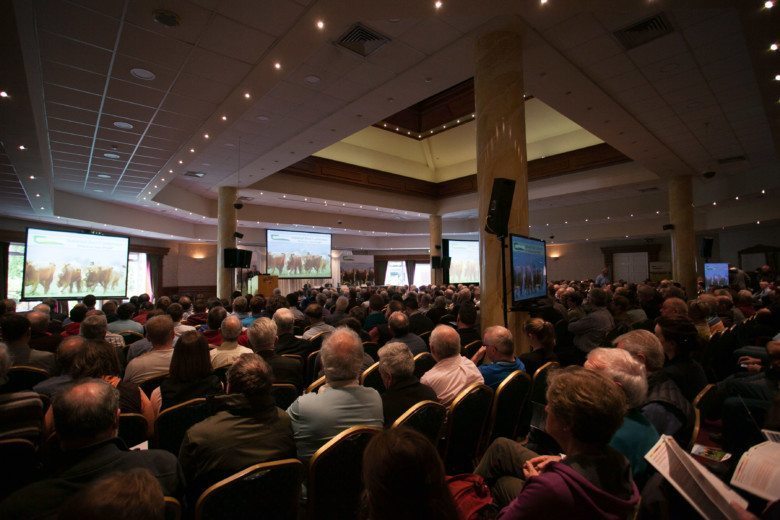
Large numbers of beef farms attended the Teagasc National Beef Conference which took place today, Tuesday, October 4th, in the Hodson Bay Hotel.
Picture Credit: Clare Frances Photography
The theme for the conference was putting “Practice into Profit” and speaking at the opening of the conference, Teagasc Director, Professor Gerry Boyle said: “Teagasc through its research, advisory and education programmes will continue to play a huge role in working with farmers and the beef industry to ensure that technologies, such as those that were discussed today, would be put into practice on farms, thus leading to more sustainable and profitable beef systems on Irish farms over the coming years”.
Research Papers
Rob Prendiville, Teagasc researcher, presented the latest research coming from Johnstown Castle where many different systems of dairy calf-to-beef have been evaluated in recent years. His key message was: “Systems that utilise high quantities of pasture and which are focused on high output per hectare are fundamental to the profitability of calf to beef systems”.
Calf Health
Martin Kavanagh, consultant vet with Cow Solutions, gave a paper on the practical factors which affect calf health in indoor calf rearing systems. Martin Kavanagh emphasised that: “The environment the young calf is in is critical in maintaining the health of bought in calves and that good management input can solve many issues that otherwise would compromise the immune system and disease burdens on these calves”.
Calf to beef enterprise
Alan Kehoe, a young beef farmer from County Wexford, explained how he has built up a calf to beef enterprise on his home farm since returning from Australia in 2012. He now rears 120 calves each year and brings them through to beef. Alan Kehoe said: “The three year plan I put in place with my Teagasc advisor set clear targets for me to achieve and by following this plan, especially in the areas of grassland management, I am on target to return a gross margin of over €1,200 per hectare from my beef enterprise in 2018”.

Picture Credit: Clare Frances Photography
French beef cattle
Thierry Pabiou of ICBF presented a paper on behalf of Laurent Griffon of the Institut de l’Elevage in Paris. He outlined how the French beef cattle performance recording system is collecting the weights from over 1.2 million beef animals on farms before they are 300 days of age, and that this level of recording is the base of the French national beef breeding scheme. This was followed by a paper given by County Tipperary suckler farmer, David Clarke, who explained that through the recording of calving and breeding data, along with birth and weaning liveweights over a long number of years, the accuracy of the replacement index of the suckler cows on his farm were now much higher than the national average which gives him the confidence to make much more informed breeding decisions when it comes to selecting which animals he will breed from.
Beef genomics
The last paper of the conference was presented by Teagasc geneticist, Donagh Berry, who described how over the coming years beef genomics will be about much more than just increasing the reliability of the beef breeding indices. He said: “There are many uses for genomics including parentage verification, mating advice to minimise inbreeding, monitoring of major genes or unfavourable DNA mutations, as well as increased accuracy of genetic evaluations”.

